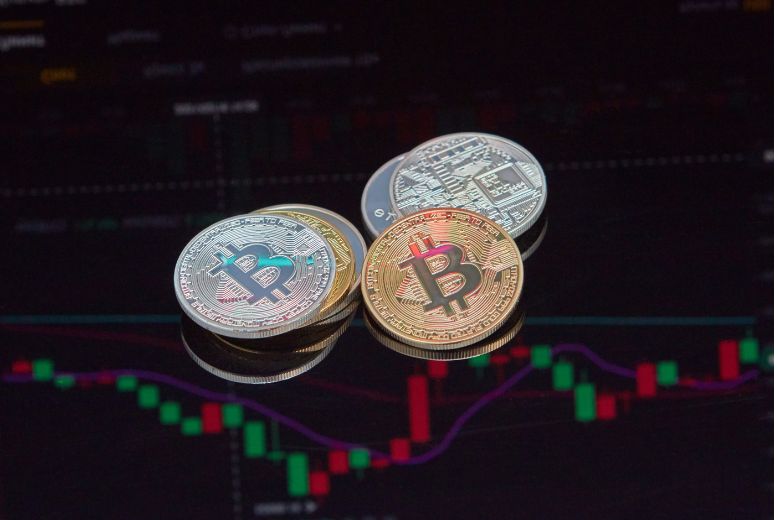Cryptocurrency Mining: Unleashing the Power of Digital Gold
Introduction to Cryptocurrency Mining
In recent years, the rise of cryptocurrencies has revolutionized the global financial landscape. Cryptocurrencies, such as Bitcoin and Ethereum, have captured the imagination of investors and technology enthusiasts alike. But have you ever wondered how these digital currencies are created and secured? The answer lies in the process known as cryptocurrency mining.
What is Cryptocurrency Mining?
Cryptocurrency mining is the process of validating and verifying transactions on a blockchain network while creating new coins as a reward. It serves two critical functions: securing the network and minting new digital assets. Unlike traditional fiat currencies that are issued by central banks, cryptocurrencies are decentralized and rely on miners to maintain the integrity of the blockchain.
How Does Cryptocurrency Mining Work?
At its core, cryptocurrency mining involves solving complex mathematical problems to validate transactions and add them to the blockchain. Miners use powerful computers equipped with specialized hardware to perform these calculations. The first miner to solve the problem and validate the transactions is rewarded with a certain amount of newly minted cryptocurrency.
Popular Cryptocurrencies for Mining
While Bitcoin remains the most well-known cryptocurrency, several other digital assets are also worth mining. Ethereum, Litecoin, and Monero are among the popular choices for miners due to their liquidity and potential for profitability. Each cryptocurrency has its unique mining algorithm and specifications, requiring miners to adapt their hardware and software accordingly.
Hardware Requirements for Cryptocurrency Mining
Successful cryptocurrency mining requires powerful hardware capable of handling complex calculations. Dedicated mining rigs equipped with high-end graphics processing units (GPUs) or application-specific integrated circuits (ASICs) are commonly used. The choice of hardware depends on the specific cryptocurrency being mined and the miner’s budget and preferences.
Choosing the Right Mining Software
In addition to hardware, selecting the appropriate mining software is crucial for efficient mining operations. The mining software acts as a bridge between the mining hardware and the blockchain network, facilitating communication and data processing. Miners can choose from various software options based on their hardware compatibility, features, and ease of use.
Joining a Mining Pool
Mining pools have gained popularity among miners seeking a more consistent and predictable income. A mining pool is a collaborative group of miners who combine their computational resources to increase their chances of solving blocks and receiving rewards. By joining a mining pool, miners can share the workload and receive a proportional share of the mining rewards based on their contributions.
Calculating Mining Profitability
Before embarking on a mining venture, it is crucial to assess the potential profitability. Mining profitability depends on various factors, including the cryptocurrency’s market price, mining difficulty, electricity costs, and hardware efficiency. Miners often utilize specialized online calculators to estimate their potential earnings and determine the viability of their mining operations.
Energy Consumption and Environmental Impact
One significant concern surrounding cryptocurrency mining is its energy consumption and environmental impact. The computational power required for mining, particularly for Bitcoin, demands substantial electricity. This has led to debates about the sustainability of mining operations and the need for greener alternatives, such as renewable energy sources and more energy-efficient mining hardware.
Challenges and Risks in Cryptocurrency Mining
Cryptocurrency mining is not without its challenges and risks. The industry is highly competitive, with an increasing number of miners vying for limited rewards. Miners must stay updated with the latest technological advancements and market trends to remain profitable. Additionally, security threats, such as hacking and malware, pose risks to miners’ wallets and the overall stability of the blockchain network.
Government Regulations and Legal Considerations
As cryptocurrencies gain mainstream attention, governments worldwide are developing regulations to govern their use and mining activities. Legal considerations vary across jurisdictions, with some countries embracing cryptocurrencies while others impose restrictions or outright bans. Miners must be aware of the legal implications and compliance requirements to operate within the boundaries of the law.
Future Trends in Cryptocurrency Mining
The field of cryptocurrency mining is ever-evolving, driven by technological advancements and market dynamics. As the demand for cryptocurrencies continues to grow, mining operations are becoming more sophisticated and efficient. Innovations such as proof-of-stake (PoS) algorithms and decentralized mining protocols hold the promise of reducing energy consumption and enhancing scalability.
Conclusion
Cryptocurrency mining plays a vital role in maintaining the integrity and security of blockchain networks while providing opportunities for individuals and businesses to participate in the creation of digital assets. As the world embraces the decentralized future, understanding the fundamentals of cryptocurrency mining becomes essential for those interested in exploring this exciting realm.
FAQ
Q1: Is cryptocurrency mining profitable? A1: The profitability of cryptocurrency mining depends on various factors such as the cryptocurrency being mined, mining hardware, electricity costs, and market conditions. It is essential to consider these factors and perform thorough calculations to determine potential profitability.
Q2: Can I mine cryptocurrencies with my regular computer? A2: In most cases, mining cryptocurrencies with a regular computer is not feasible. Successful mining requires specialized hardware, such as GPUs or ASICs, to handle the computational demands of the mining process.
Q3: How much electricity does cryptocurrency mining consume? A3: Cryptocurrency mining can consume a significant amount of electricity, especially for cryptocurrencies like Bitcoin. Miners should consider the energy costs and explore energy-efficient alternatives to mitigate the environmental impact.
Q4: Are there any risks associated with cryptocurrency mining? A4: Yes, cryptocurrency mining comes with risks such as hardware failure, hacking, and market volatility. Miners should adopt best security practices, stay updated with industry trends, and assess the risks involved before engaging in mining activities.
Q5: Can I mine multiple cryptocurrencies simultaneously? A5: Yes, it is possible to mine multiple cryptocurrencies simultaneously by utilizing mining software that supports multi-algorithm or multi-pool mining. However, the hardware requirements and mining profitability may vary for each cryptocurrency.
